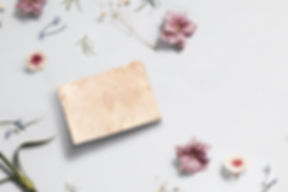
Cupping is an ancient Chinese healing form, a type of alternative medication therapy that therapists use to help with pain, inflammation, blood flow, relaxation and well-being and as a type of deep-tissue massage.
The therapists places cups on your back, stomach, arms, legs or other parts of your body. Inside the cup, a vacuum or suction force pulls skin upward. This suction is thought to improve the flow of energy in the body and facilitate healing.
How does cupping work?
Experts are still exploring how cupping eases pain and disease symptoms. There isn’t a lot of research on the therapy. According to the research, cupping may remove toxins by stimulating the immune response, both locally and systemically.
It may also eliminate uric acid, a natural waste product from the digestion of certain foods. Uric acid buildup can lead to high levels of acidity in the blood and urine.

Cupping may also have a positive effect on the lymphatic system, which is partially responsible for eliminating your body’s waste.
Suction from cupping draws fluid into the treated area. This suction force expands and breaks open tiny blood vessels (capillaries) under the skin. Your body treats the cupping area like an injury. It sends more blood to the area to stimulate the natural healing process. Some people theorize that cupping clears the pores and releases toxins. The evidence for cupping’s ability to remove toxins is promising, but more research is needed to confirm it.
What does cupping treat?
People mostly use cupping to relieve conditions that cause pain. Some people say it also helps with chronic (ongoing) health issues. Cupping may ease symptoms of:
Arthritis, including rheumatoid arthritis.
Back pain, neck pain, knee pain and shoulder pain.
Breathing problems, such as asthma.
Carpal tunnel syndrome.
Gastrointestinal disorders, such as irritable bowel disease (IBD).
Headaches and migraines
High blood pressure (hypertension).
What are the different types of cups?
Most providers use glass or plastic cups, but cups may be:
Bamboo.
Ceramic.
Metal.
Silicone.
How is cupping performed?
There are four main categories of cupping performed today:
Dry cupping: a suction-only method
Wet/bleeding cupping: may involve both suction and controlled medicinal bleeding
Running cupping: involves moving suctioned cups around the body after applying oil to massage the desired area
Flash cupping: involves quick, repeated suction and release of cups on an area of the body
Cupping may also involve the use of:
acupuncture needles
moxibustion, or the burning of mugwort leaves
magnets
laser therapy
electrical stimulation
water
herbs
Your practitioner, your medical needs, and your preferences will help determine which method is used.
What should I expect after cupping?
The suction force from cupping breaks open tiny blood vessels under the skin. You will have round bruise-like marks that fade in a week or two.
What conditions can cupping treat?
Cupping has been used to treat a wide variety of conditions. It may be particularly effective at easing conditions that create muscle aches and pains.
Since the cups can also be applied to major acupressure points, the practice is possibly effective at treating digestive issues, skin issues, and other conditions commonly treated with acupressure.
Cupping therapy may help with the following conditions, among others:
lower back pain
neck and shoulder pain
headache and migraine
knee pain
shingles
facial paralysis
cough and dyspnea
acne
lumbar disc herniation
cervical spondylosis
brachialgia, the pain produced by a trapped nerve in the neck
carpal tunnel syndrome
hypertension
diabetes mellitus
rheumatoid arthritis
asthma
More studies are needed to assess the true effectiveness of cupping for these conditions.
What are potential risks or complications of cupping?
Cupping is a relatively low-risk therapy. Still, you may experience:
Burns from heated cups.
Fatigue.
Headaches.
Muscle tension or soreness.
Nausea.
Skin infections, itching or scarring.
Who shouldn’t get cupping?
Because researchers know little about cupping’s effects on pregnancy, moms-to-be shouldn’t get the therapy. You should also forego cupping if you have:
Bleeding disorders like hemophilia.
Blood clotting problems, such as deep vein thrombosis or history of strokes.
Skin conditions, including eczema and psoriasis.
Seizures (epilepsy).
How effective is cupping?
There aren’t many high-quality studies about the effectiveness of cupping. And researchers don’t know a lot about why or how cupping might help people. Cupping may provide a placebo effect, meaning it helps because people believe it does.
When should I call the doctor?
You should call your healthcare provider if you get cupping and experience:
Burns.
Extreme pain or soreness.
Fever or other signs of skin infection (redness, tenderness, yellow discharge).
Sources
Healthline.com https://www.healthline.com/health/cupping-therapy
Aboushanab TS, et al. (2018). Cupping therapy: An overview from a modern medicine perspective. sciencedirect.com/science/article/pii/S2005290117302042
Al-Bedah AMN, et al. (2018). The medical perspective of cupping therapy: Effects and mechanisms of action. sciencedirect.com/science/article/pii/S2225411018300191
Araujo JA, et al. (2012). Heme oxygenase-1, oxidation, inflammation, and atherosclerosis. frontiersin.org/articles/10.3389/fphar.2012.00119/full
Dermatitis. (2014). sciencedirect.com/topics/medicine-and-dentistry/dermatitis
Interferon. (2014). sciencedirect.com/topics/medicine-and-dentistry/interferon
Lowe DT. (2017). Cupping therapy: An analysis of the effects of suction on skin and the possible influence on human health. sciencedirect.com/science/article/abs/pii/S1744388117304024
Mehta P, et al. (2015). Cupping therapy: A prudent remedy for a plethora of ailments. sciencedirect.com/science/article/pii/S2225411014000509?via%3Dihub
Clevelandclinic.org https://my.clevelandclinic.org/health/treatments/16554-cupping
Webmd.com https://www.webmd.com/balance/guide/cupping-therapy
